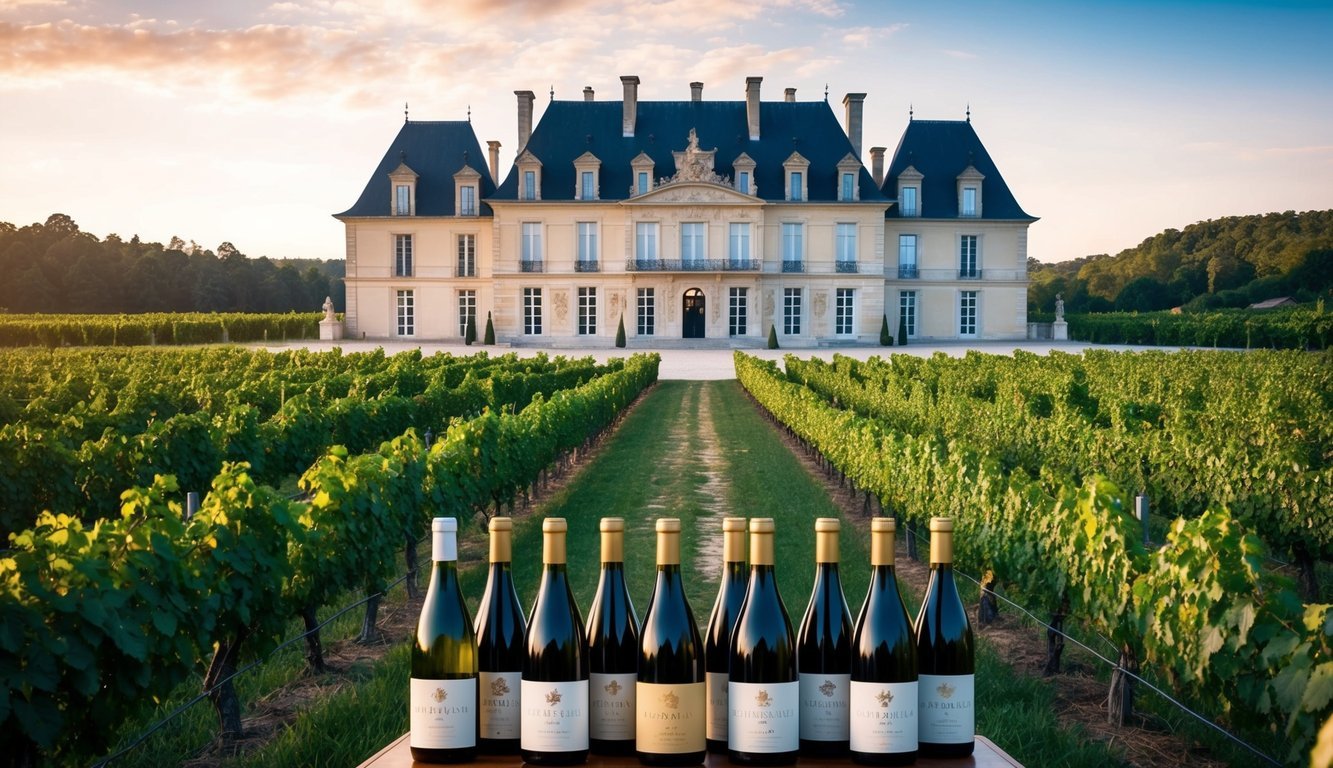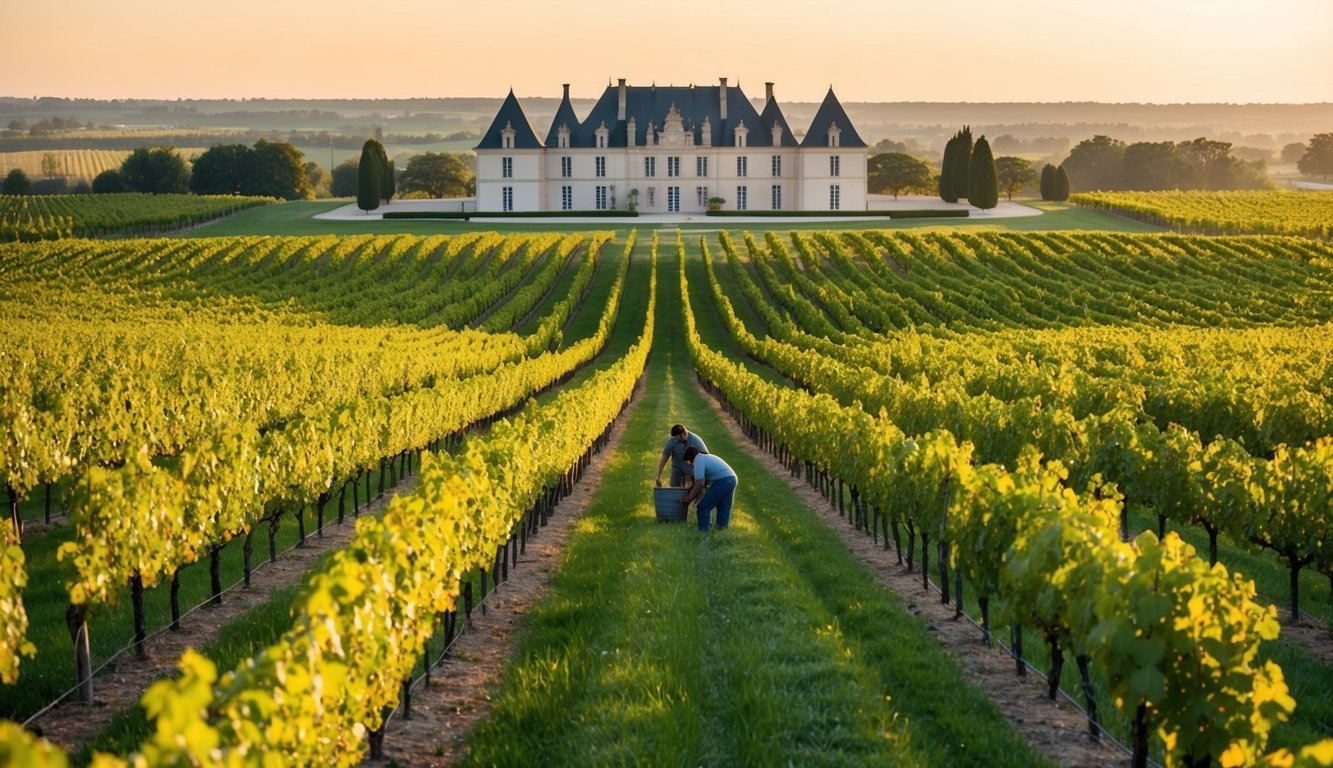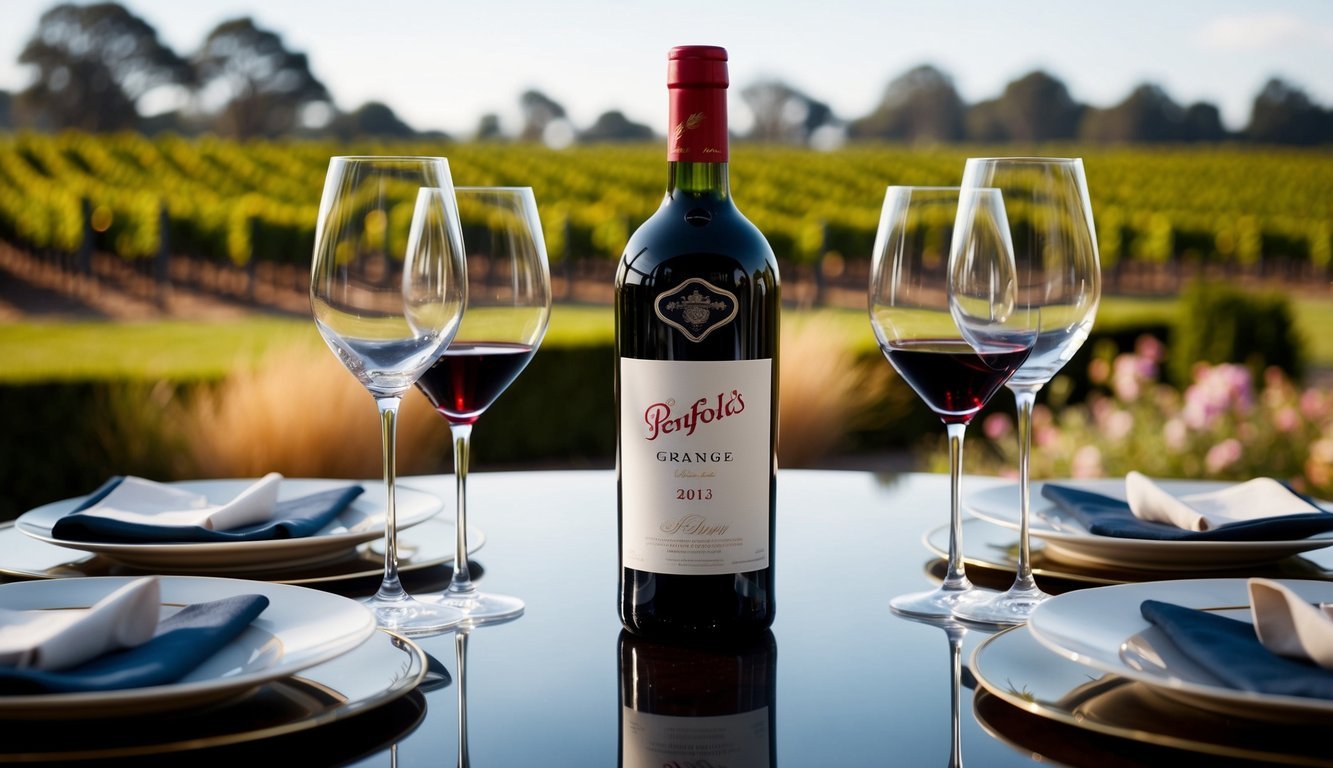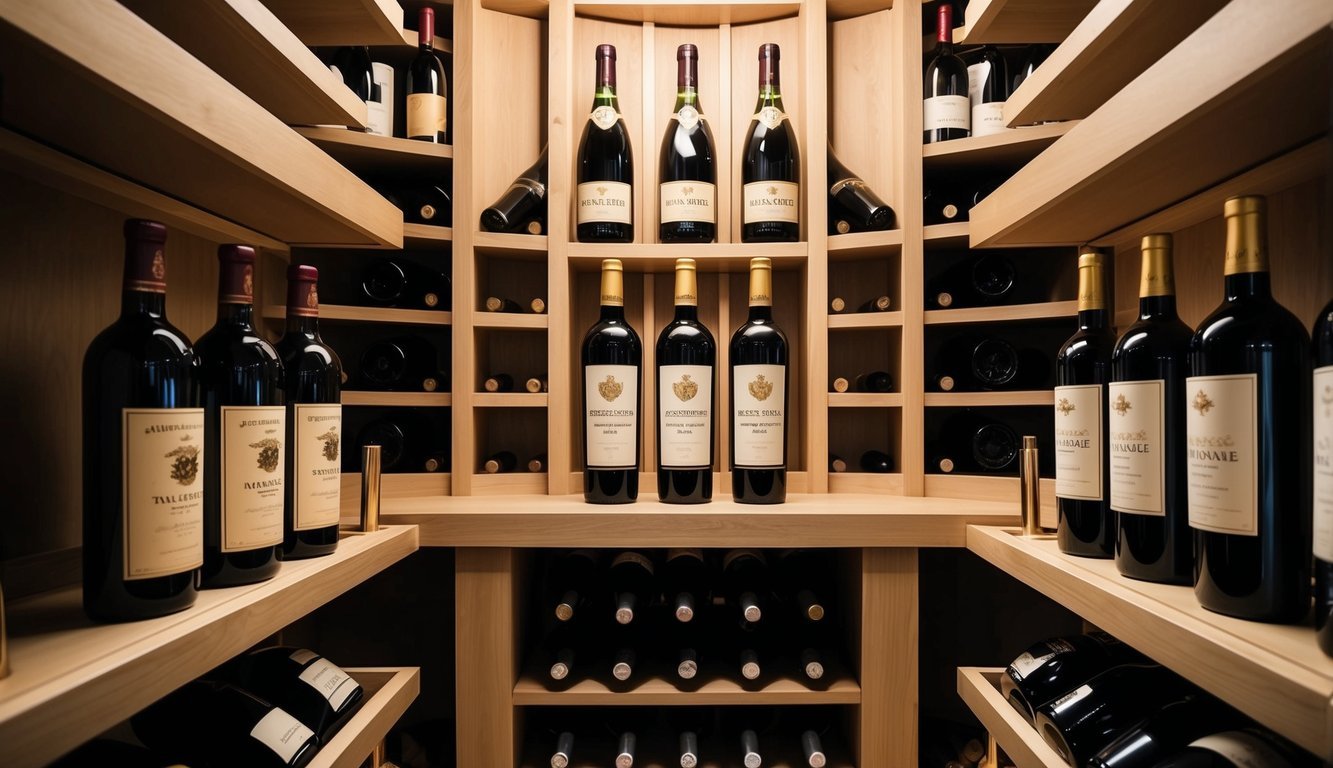Ever wondered why some wines come with eye-watering price tags? You’re not alone.
The world of fine wines can be fascinating and perplexing, with certain bottles commanding astronomical sums. These expensive wines often reflect rare grape varieties, exceptional growing conditions, meticulous production methods, and storied reputations built over decades or even centuries.
But don’t worry if your budget doesn’t stretch to four or five figures for a bottle.
The good news is that for every pricey vintage, there are typically more affordable alternatives that can deliver similar flavors and experiences.
You don’t need to break the bank to enjoy high-quality wines.
In this article, we’ll explore why certain wines fetch such high prices and suggest some wallet-friendly options that still offer excellent taste.
1) Château Margaux 2015

Château Margaux 2015 is a wine that commands attention and a hefty price tag.
You’ll find this Bordeaux blend priced around $1,600 per bottle, making it a true luxury item.
What makes it so special? The 2015 vintage is considered exceptional, with perfect growing conditions in the Margaux region of France.
This resulted in grapes of outstanding quality.
The wine is composed primarily of Cabernet Sauvignon, with small amounts of Merlot, Cabernet Franc, and Petit Verdot.
This blend creates a complex flavor profile that wine enthusiasts adore.
When you taste Château Margaux 2015, you’ll notice aromas of blueberries and mint.
The flavor is luscious and glossy, with an intrinsic perfume that’s characteristic of this First Growth estate.
Critics have raved about this vintage, with many awarding it perfect scores.
Its aging potential is remarkable, meaning it will continue to improve for decades.
If you’re looking for more affordable alternatives, consider other wines from the Margaux region.
Château d’Arsac and Château Dauzac offer similar flavor profiles at a fraction of the price.
2) Romanée-Conti Grand Cru 2018

You might wonder why this wine commands such astronomical prices.
The 2018 Romanée-Conti Grand Cru is the pinnacle of Burgundy wines, produced by the legendary Domaine de la Romanée-Conti (DRC).
This wine comes from a tiny 1.8-hectare vineyard, yielding only about 450 cases per year.
Its scarcity alone contributes to its hefty price tag.
The 2018 vintage is particularly special.
It offers a complex bouquet of wild strawberries, cranberries, and delicate floral notes.
On the palate, you’ll find super-fine tannins and exceptional balance.
DRC’s meticulous winemaking practices and centuries-old tradition add to the wine’s allure.
They use organic and biodynamic methods, ensuring the highest quality grapes.
The aging potential of this wine is remarkable.
While it’s already impressive, it will continue to develop complexity for decades.
If you’re lucky enough to taste it, you’ll understand why collectors and connoisseurs are willing to pay upwards of $20,000 for a bottle.
It’s not just wine; it’s liquid history.
3) Screaming Eagle Cabernet Sauvignon 2012
The Screaming Eagle Cabernet Sauvignon 2012 is a prime example of luxury in a bottle.
You’ll find this Napa Valley gem priced around $4,474, making it one of the most expensive wines available.
What makes it so pricey? Rarity plays a big role.
Screaming Eagle produces very limited quantities each year, creating high demand among collectors and enthusiasts.
The 2012 vintage is particularly sought after for its exceptional quality.
You’ll experience a silky smooth texture and complex flavors that develop beautifully with proper decanting.
To fully appreciate this wine, serve it between 60-65°F (15-18°C).
Give it at least an hour to breathe before enjoying.
This allows the aromas and flavors to really open up.
The wine’s cult status also contributes to its high price tag.
It has a reputation for excellence that keeps buyers coming back vintage after vintage.
If you’re lucky enough to taste it, you’ll understand why it commands such a premium.
The 2012 Screaming Eagle offers a truly unforgettable wine experience for those willing to splurge.
4) Penfolds Grange 2013

The 2013 vintage of Penfolds Grange is a prime example of why this iconic Australian wine commands such high prices.
As one of the most renowned wines in the world, Grange consistently delivers exceptional quality and aging potential.
This particular vintage showcases the power and richness Grange is famous for.
You’ll find a complex blend of autumnal notes, dried leaves, flowers, and dark berries on the nose.
The palate offers a perfect balance of raw meat and miso savory flavors.
What sets the 2013 Grange apart is its ability to be incredibly beguiling even in its youth.
The ultrafine tannins provide structure without overwhelming the palate, allowing the wine’s nuances to shine through.
As with all Grange vintages, the 2013 will continue to improve with age.
Its potential for long-term cellaring contributes significantly to its high price tag.
Collectors and enthusiasts eagerly seek out each new release, driving up demand and value.
5) Domaine Leroy Musigny 2017

You might need to sit down for this one.
Domaine Leroy Musigny 2017 is widely recognized as one of the most expensive Pinot Noirs in the world.
It’s not uncommon for a single bottle to fetch over $20,000.
What makes it so pricey? For starters, Domaine Leroy is known for its meticulous biodynamic farming practices and extremely low yields.
This means they produce far fewer bottles than other vineyards.
The Musigny vineyard itself is tiny, adding to the wine’s rarity.
Domaine Leroy only owns a small portion of this already small plot, making their Musigny incredibly scarce.
Quality is another factor.
Lalou Bize-Leroy, the estate’s owner, is renowned for her uncompromising standards.
She’s often called the “Queen of Burgundy” for her exceptional winemaking skills.
The 2017 vintage was particularly good in Burgundy, which likely contributes to this wine’s high price.
Collectors and wine enthusiasts clamor for bottles from top years like this one.
If you’re lucky enough to taste it, you can expect an extraordinarily complex and elegant Pinot Noir.
But for most of us, it’ll remain a dream bottle to admire from afar.
Understanding The High Costs

The steep prices of certain wines stem from complex production processes and scarcity factors.
These elements combine to create truly exceptional and rare bottles that command premium prices in the market.
Production Process
Expensive wines often involve meticulous and labor-intensive techniques.
Hand-picking grapes ensures only the best fruit is used, but it’s time-consuming and costly.
Many high-end wineries employ careful sorting methods, removing any imperfect grapes.
Aging is another crucial factor.
Premium wines may spend years in oak barrels, developing complex flavors.
This ties up capital and storage space, increasing costs.
Some winemakers use specialized fermentation techniques or add rare ingredients, further driving up production expenses.
The use of top-quality equipment and cutting-edge technology in winemaking also contributes to higher prices.
These investments allow for precise control over the process but come at a significant cost.
Limited Edition Factors
Scarcity plays a major role in wine pricing.
Certain vineyards produce very small quantities, making their wines rare and sought-after.
Climate and weather conditions can drastically affect grape yields, sometimes resulting in tiny harvests of exceptional quality.
Prestigious wine regions often have strict regulations limiting production.
This ensures quality but also creates scarcity.
For example, wines from small, renowned appellations like Vosne-Romanée in Burgundy are inherently limited and highly prized.
Collector demand can drive prices skyward for certain vintages or special releases.
As supplies dwindle over time, remaining bottles become increasingly valuable.
Some wineries intentionally create limited editions, numbering each bottle to enhance exclusivity and appeal to collectors.
Affordable Wine Alternatives
Finding budget-friendly wines that rival expensive bottles is possible with some knowledge and exploration.
You can discover delightful options that offer similar qualities to high-end wines without breaking the bank.
Quality And Flavor Comparison
When seeking affordable alternatives, look for wines from lesser-known regions that use similar grape varieties.
For example, instead of splurging on a Château Canon Saint Émilion Grand Cru ($175+), try a Château Rocher Gardat ($35.99).
Both are Bordeaux blends, but the latter offers comparable quality at a fraction of the price.
Consider swapping pricey Pinot Noirs like Orin Swift Slander ($49.99) for DeLoach Private Collection Pinot Noir ($29.99).
You’ll find similar red fruit flavors and silky textures at a more accessible price point.
For white wine lovers, explore alternatives to expensive Chablis.
Look for unoaked Chardonnays from cooler regions, which can provide comparable crispness and minerality at lower prices.
Knowing What To Look For
To find great affordable wines, focus on emerging wine regions.
For example, Lebanon produces excellent Cabernet Sauvignon blends starting at $25, rivaling more expensive French options.
Pay attention to vintage variations.
Some years produce exceptional wines across all price points.
You can research wine ratings and expert reviews to identify standout affordable bottles.
Learn about wine production methods.
Wines made using traditional techniques often deliver higher quality at lower prices compared to heavily marketed brands.
Experiment with lesser-known grape varieties.
You might discover a new favorite that offers similar characteristics to expensive classics at a fraction of the cost.

